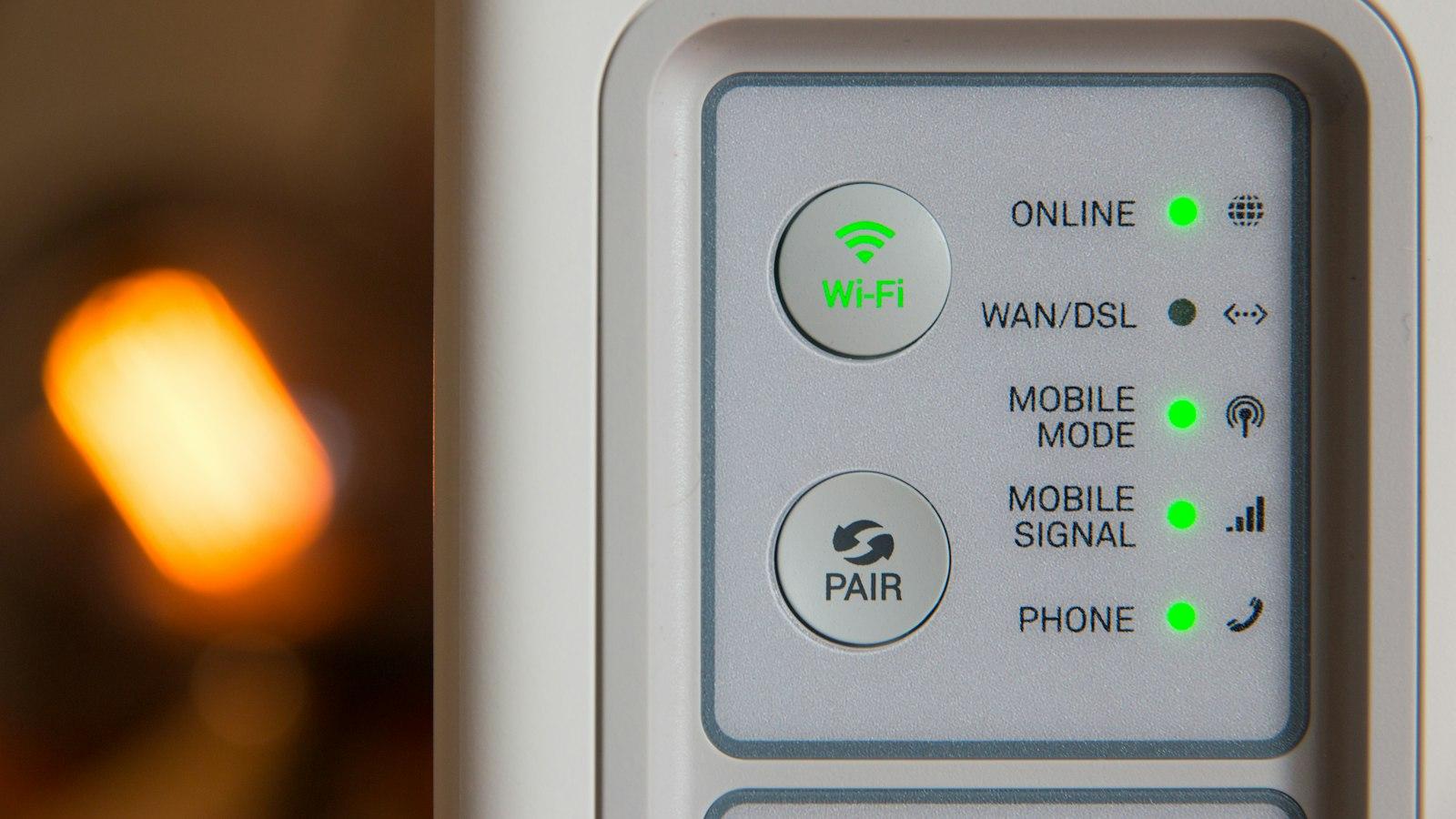
Welcome to the world of Wi-Fi, a technology that has revolutionized the way we connect to the internet. Whether you are a digital native or new to the concept, understanding how to use Wi-Fi effectively can significantly enhance your online experience. In this article, we will guide you through the ins and outs of Wi-Fi, helping you navigate the complexities, set up a secure connection, troubleshoot common issues, and make the most of this ubiquitous wireless network. So, let’s dive in and explore the fundamental steps to harness the power of Wi-Fi, ensuring a seamless browsing, streaming, and gaming experience.
Introduction to Wi-Fi
Wi-Fi, short for “Wireless Fidelity,” has become an integral part of our modern lives, connecting us to the vast world of information and communication. With Wi-Fi, you can wirelessly access the internet, stream your favorite shows, connect your devices, and more. In this post, we will guide you through the ins and outs of using Wi-Fi, helping you harness its power effectively.
First and foremost, you need a Wi-Fi capable device to connect to a Wi-Fi network. This can be a smartphone, tablet, laptop, or any other device equipped with Wi-Fi capabilities. Once you have such a device, make sure it is turned on and the Wi-Fi feature is enabled. Typically, you can find the Wi-Fi settings in your device’s settings menu.
To connect to a Wi-Fi network, you need to find an available network nearby. This can be easily done by accessing the Wi-Fi settings on your device. A list of available networks, also known as SSIDs, will appear. Look for the network you want to connect to and select it. If the network is secured, you will be prompted to enter a password. Once entered correctly, you will be connected to the Wi-Fi network.
It’s important to note that not all Wi-Fi networks are created equal. Some networks may have limited range, making them suitable only for certain areas. Others may provide faster speeds, ideal for downloading large files or streaming high-definition content. When choosing a Wi-Fi network, take into consideration your specific needs and the network’s capabilities.
On occasion, you may find yourself in an area with multiple Wi-Fi networks available. In such cases, it’s advisable to choose a network that is not congested. Congested networks can be slower due to the number of connected devices or interference from nearby networks. You can check the network’s congestion by using Wi-Fi analyzer apps or simply trial and error with different networks.
Lastly, it’s important to safeguard your Wi-Fi connection to prevent unauthorized access or malicious activities. Always ensure your Wi-Fi network is password protected, preferably with a strong password that includes a combination of letters, numbers, and special characters. Avoid using easily guessable passwords to protect your personal information and prevent others from using your internet connection without permission.
Using Wi-Fi opens up a world of possibilities, providing you with the freedom to connect and access the internet wirelessly. By following these simple steps, you can enhance your Wi-Fi experience and make the most out of this remarkable technology. So go ahead, connect, explore, and discover the limitless opportunities that Wi-Fi has to offer!

Understanding Wi-Fi Networks
Paragraph 1:
Wi-Fi networks have become an essential part of our daily lives, providing us with the convenience of wireless internet access. However, understanding how to use Wi-Fi effectively is crucial for a seamless online experience. Whether you’re at home, work, or a public space, knowing the ins and outs of Wi-Fi networks can greatly enhance your connectivity experience.
Paragraph 2:
To get started with Wi-Fi, you’ll need a device that supports wireless connectivity, such as a smartphone, tablet, laptop, or smart home device. Once you have a compatible device, you can easily access Wi-Fi networks by navigating to your device’s settings and selecting the Wi-Fi option. A list of available networks will appear, and you can choose the network you want to connect to. Keep in mind that some networks may require a password, which you can obtain from the network owner or administrator.
Paragraph 3:
Understanding Wi-Fi security is vital in protecting your personal information from potential threats. When connecting to a Wi-Fi network, always make sure to choose secured networks with encryption enabled, such as WPA2. This ensures that your data remains confidential and secure while you browse the internet. Avoid connecting to open or unsecured networks, as they can leave your device vulnerable to hacking or data breaches.
Paragraph 4:
Wi-Fi signal strength plays a significant role in the quality of your internet connection. Factors such as distance from the router, physical barriers, and interference from other devices can impact signal strength. To optimize your Wi-Fi signal, try positioning your device closer to the router, removing any obstructions, and minimizing interference from other electronics. Additionally, upgrading your router to a newer model with stronger signal capabilities can also improve your connection.
Paragraph 5:
If you’re experiencing sluggish internet speeds or frequent disconnections, there are a few troubleshooting steps you can take. First, try restarting your device and router. This often resolves temporary issues and restores connectivity. If the problem persists, consider checking for any firmware updates for your router or contacting your internet service provider for further assistance. Remember, having a stable and reliable Wi-Fi network is crucial in today’s digital age, so don’t hesitate to troubleshoot and optimize your setup for the best internet experience possible.

Setting up and Connecting to Wi-Fi
In today’s connected world, Wi-Fi has become an essential tool for staying connected to the internet. Whether you’re at home, at work, or on the go, knowing how to set up and connect to Wi-Fi is crucial. In this post, we will guide you through the process of setting up Wi-Fi on your device and connecting to it seamlessly.
Choosing the Right Wi-Fi Network
Before you can connect to Wi-Fi, you need to select the appropriate network. On your device, navigate to the Wi-Fi settings, typically found in the network settings menu. Here, you will see a list of available Wi-Fi networks. Look for the network name (SSID) that corresponds to your Wi-Fi router. Once you have identified the correct network, click on it to connect.Entering the Wi-Fi Password
To secure your Wi-Fi network, it’s essential to set a password. When connecting to a protected network, you will be prompted to enter the Wi-Fi password. This password is usually a combination of letters, numbers, and special characters. Please note that the password is case-sensitive, so ensure that you type it correctly. Once you have entered the password, click on the “Connect” button, and your device will establish a connection to the Wi-Fi network.Troubleshooting Connection Issues
If you’re having trouble connecting to Wi-Fi, several troubleshooting steps can help resolve the issue. First, ensure that your device is within range of the Wi-Fi router. Walls and physical barriers can weaken the signal, so try moving closer to the router. If that doesn’t work, restarting both your device and the router can often resolve connectivity problems. You can also try forgetting the network on your device and reconnecting to it again.Optimizing Your Wi-Fi Connection
To ensure the best possible Wi-Fi experience, there are a few things you can do to optimize your connection. First, position your Wi-Fi router in a central location to minimize signal interference. Avoid placing it near other electronic devices that may cause interference, such as cordless phones or baby monitors. Additionally, updating your router’s firmware and keeping your device’s Wi-Fi drivers up to date can also improve performance.Wi-Fi Network Extenders and Repeaters
For larger homes or offices with dead zones where the Wi-Fi signal is weak, consider using Wi-Fi network extenders or repeaters. These devices amplify or repeat the Wi-Fi signal, allowing you to access the internet in areas that were previously out of range. Setting them up usually involves a simple pairing process with your existing Wi-Fi network. By strategically placing these extenders or repeaters, you can ensure a strong and reliable Wi-Fi connection throughout your space.
Remember, is a straightforward process that can greatly enhance your internet experience. By following these steps and optimizing your connection, you’ll be able to enjoy uninterrupted internet access and take full advantage of the countless online opportunities available to you.![]()
Wi-Fi Security Measures
With the rapid growth of technology, Wi-Fi has become an essential part of our daily lives, providing us with the convenience of being connected to the internet wirelessly. However, it’s crucial to be aware of the potential security risks associated with Wi-Fi networks. By taking the appropriate security measures, you can ensure that your Wi-Fi network remains secure and protect your sensitive information from unauthorized access.
Here are some important steps to strengthen the security of your Wi-Fi network:
1. Change the Default Password
One of the simplest yet most effective ways to enhance your Wi-Fi security is by changing the default password of your router. Attackers often have access to the default passwords, so creating a strong and unique password is crucial to preventing unauthorized access to your network. Make sure your password includes a combination of upper and lowercase letters, numbers, and special characters.
2. Enable Network Encryption
Enabling network encryption will add an extra layer of security to your Wi-Fi network, making it harder for attackers to intercept and decipher your data. The two common types of encryption are WPA (Wi-Fi Protected Access) and WPA2. It is recommended to use WPA2, as it provides stronger security than its predecessor. To enable encryption, access your router’s settings page and select WPA2 as the encryption type.
3. Change the Network Name (SSID)
The default network name (SSID) of your router might reveal the manufacturer or the model, making it easier for attackers to identify vulnerabilities. Changing the SSID to a unique and unrelated name adds an extra layer of protection against potential attacks. Additionally, hiding the SSID can make your network less visible to unauthorized users, further reducing the risk of unauthorized access.
4. Utilize a Firewall
Setting up a firewall is essential for blocking unauthorized access to your network. A firewall acts as a barrier between your network and the internet, monitoring incoming and outgoing traffic for potential threats. Most routers have built-in firewalls that can be enabled through the router’s settings page. However, it’s recommended to install a reputable software firewall on your device for an additional layer of security.
5. Keep Your Router’s Firmware Updated
Regularly updating your router’s firmware is vital as it fixes bugs, vulnerabilities, and improves security. Manufacturers often release firmware updates to address any loopholes or security flaws that may have been discovered. Enable automatic updates if available, or periodically check the manufacturer’s website for firmware updates and apply them to ensure your network remains secure.

Tips for Optimizing Wi-Fi Performance
1. Position your router strategically:
- Place your router in a central location to ensure optimal coverage throughout your home or office.
- Avoid placing the router near thick walls, metal objects, or other electronic devices that may interfere with the Wi-Fi signal.
- Elevate the router if possible, as the signal tends to spread better from a higher position.
2. Secure your Wi-Fi network:
- Set a strong password for your Wi-Fi network to prevent unauthorized access.
- Enable encryption, such as WPA2, to protect your data from being intercepted by others.
- Regularly update your router’s firmware to ensure it has the latest security features and bug fixes.
3. Reduce interference:
- Avoid placing other electronic devices, like cordless phones or microwave ovens, near your router as they can cause interference.
- Choose a different Wi-Fi channel if you’re experiencing slow or unreliable connections. You can use free tools like Wi-Fi Analyzer to identify the least crowded channel in your area.
- Consider using a dual-band router that operates on both 2.4GHz and 5GHz frequencies, as the 5GHz band is usually less crowded and offers faster speeds.
4. Optimize router settings:
- Change the router’s default channel to one that has less interference.
- Adjust the transmission power level to balance coverage and performance based on your specific needs.
- Enable Quality of Service (QoS) settings to prioritize traffic and ensure a smoother experience for high-bandwidth activities like streaming or gaming.
5. Upgrade your equipment if necessary:
- If you’re still experiencing slow speeds or poor coverage despite following the previous tips, it might be time to consider upgrading your router to a more advanced model.
- Look for routers with multiple antennas, beamforming technology, or mesh networking capabilities to extend coverage and improve signal strength.
- Consider purchasing a Wi-Fi range extender or a mesh Wi-Fi system to boost the signal in hard-to-reach areas of your home or office.
Q&A
Q: What is Wi-Fi?
A: Wi-Fi, short for Wireless Fidelity, is a wireless networking technology that allows devices to connect to the internet or communicate with each other without using physical wires.
Q: How does Wi-Fi work?
A: Wi-Fi uses radio waves to transmit information between devices. A device with Wi-Fi capability, such as a smartphone or laptop, connects to a Wi-Fi network (also known as a router) within its range. The router is connected to an internet source, such as a modem, and wirelessly communicates with the device, allowing internet access or data transfer.
Q: How can I connect to Wi-Fi?
A: To connect to a Wi-Fi network, ensure your device has Wi-Fi capability and is turned on. Go to the Wi-Fi settings on your device and search for available networks. Choose the desired network from the list and enter the network password, if required. Once successfully connected, you can access the internet or use other devices within the network.
Q: How do I know if my device has Wi-Fi capability?
A: Most modern smartphones, tablets, laptops, and even some household appliances come with built-in Wi-Fi capability. To check if your device has Wi-Fi, look for the Wi-Fi icon in the settings or check the device specifications in the user manual or manufacturer’s website.
Q: Can I use public Wi-Fi networks?
A: Yes, public Wi-Fi networks are available in many places such as cafes, airports, libraries, and hotels. However, it is important to exercise caution when using public Wi-Fi as these networks can be unsecured and potentially vulnerable to hacking. It is advisable to avoid accessing sensitive information or entering passwords when connected to public Wi-Fi. Using a VPN (Virtual Private Network) is recommended for additional security and protection of your data.
Q: How can I improve my Wi-Fi signal?
A: Several factors can influence Wi-Fi signal quality and coverage. To improve your Wi-Fi signal, ensure the router is placed in a central location, away from physical barriers, and not obstructed by other electronics. Make sure your device is in range of the Wi-Fi network and has a clear line of sight to the router. Additionally, minimizing interference from other electronic devices and updating your router’s firmware can also enhance Wi-Fi performance.
Q: Can I share my Wi-Fi connection with others?
A: Yes, you can share your Wi-Fi connection with others by providing them with the network name (SSID) and password. Some routers also offer a guest network option, allowing you to create a separate network for visitors without giving them access to your main network.
Q: How can I secure my Wi-Fi network?
A: To secure your Wi-Fi network, use a strong and unique password. Avoid using easily guessable passwords or common phrases. Enable network encryption, such as WPA2 (Wi-Fi Protected Access 2), which provides a higher level of security. Regularly update your router’s firmware and change the default login credentials to prevent unauthorized access.
Q: Can I use Wi-Fi on multiple devices simultaneously?
A: Yes, Wi-Fi networks allow multiple devices to connect and use the internet simultaneously. The number of devices that can connect will depend on the router’s capacity and the internet service provider’s bandwidth. Some routers also offer the option to prioritize certain devices or allocate bandwidth to ensure a smoother experience when multiple devices are connected. Consult your router’s user manual or manufacturer’s website for specific information on its capabilities.
Q: Is it safe to leave my Wi-Fi connection on at all times?
A: Keeping your Wi-Fi connection on at all times is generally safe. However, it is advisable to periodically restart your router to ensure proper functioning and clear any temporary issues. Also, be cautious of any unauthorized devices connecting to your network. Regularly monitor your connected devices list and change your Wi-Fi password occasionally for added security. In conclusion, knowing how to use Wi-Fi effectively can greatly enhance your internet browsing experience and keep you connected wherever you go. By following the steps outlined in this article, you are now equipped with the necessary knowledge to connect to Wi-Fi networks, troubleshoot common issues, and ensure a secure online experience.
Remember to always prioritize safety by using encrypted networks and avoiding sharing personal information over public Wi-Fi. Additionally, understanding the different Wi-Fi standards, channels, and frequencies can help you optimize your connection and avoid interference.
Whether you are a tech-savvy individual or a beginner, mastering the basics of Wi-Fi connectivity is essential in today’s digital age. With a solid understanding of how to use Wi-Fi, you can enjoy seamless internet access, faster connections, and the freedom to stay connected with friends, work, and entertainment, regardless of your location.
Stay curious, keep exploring, and never stop learning as you navigate the vast world of Wi-Fi technology. With continuous practice and a willingness to adapt, you’ll soon become a proficient user, making the most out of this indispensable tool. Embrace the power of Wi-Fi and make it work for you!






